Glögg, the Swedish mulled wine, isn’t something to toy with.
It is the 13th of December, the day of Lucia, in 1957. The cream of the crop of the pharmacological institution has gathered to celebrate the Nobel prize winner and pharmacology professor Daniel Bovet.
Professor Liljestrand is in the midst of his tribute to the guest of honor, who sits just a few meters away together with his wife. Can you imagine the probably both grand and drawn-out stream of words?
Suddenly, Liljestrand is interrupted by a loud bang—an explosion in the room, just next to Bovet. Glass shatters and flies over the floor.
”An involuntary Nobel salute”, Svenska Dagbladet would write.
So what increased the drama in Liljestrand’s speech and gave professor Bovet a much more memorable evening?
Yes, you guessed it—glögg. For increased security, the mulled wine for the party had been heated in a fume cupboard. Unfortunately, someone had forgotten to turn on the fan, and the gas flame ignited the evaporated alcohol fumes, causing the explosion. Despite the smashed cupboard window and glass shards, the gathered pharmacologists handled the surprise ”with the calmness of mind stemming from old habits”.
I am not here to warn you of the dangers of drinking alcohol, but you’ll be careful when you heat your glögg, won’t you?
The history of glögg
Jan-Öjvind Swahn claims that already the ancient Greeks spiced their wine. Apparently the doctor Hippocrates mixed honey and cinnamon into wine as a medicine. But maybe the healing properties of the spices aren’t the only reason why Swedish king Gustav Vasa in the 16th century was fond of sweetened wine that was spiced with cinnamon, ginger, cardamom, and cloves. Swahn finds it natural that the Swedes would have wanted to spice the wine to hide that the wine quality had been lowered during its long transportation to Sweden.
“Glödgat vin”, or mulled wine, is known in Sweden since the 1610s. The Swedish glögg is related to the German Glühwein and French brûlot.
Today, glögg is connected to Christmas, but it looks like it hasn’t always been that way. Ads from the year 1894 and onwards tempt with waffles and glögg at Skansen during the entire wintertime. In 1907, an article mentions that glögg normally appears in Stockholm cafés 8-10 days before Christmas. Apparently, one of the reasons why glögg was popular was that it was excellent to have as a pre-noon beverage(!), while warm punsch was considered suitable as an afternoon and dinner drink.
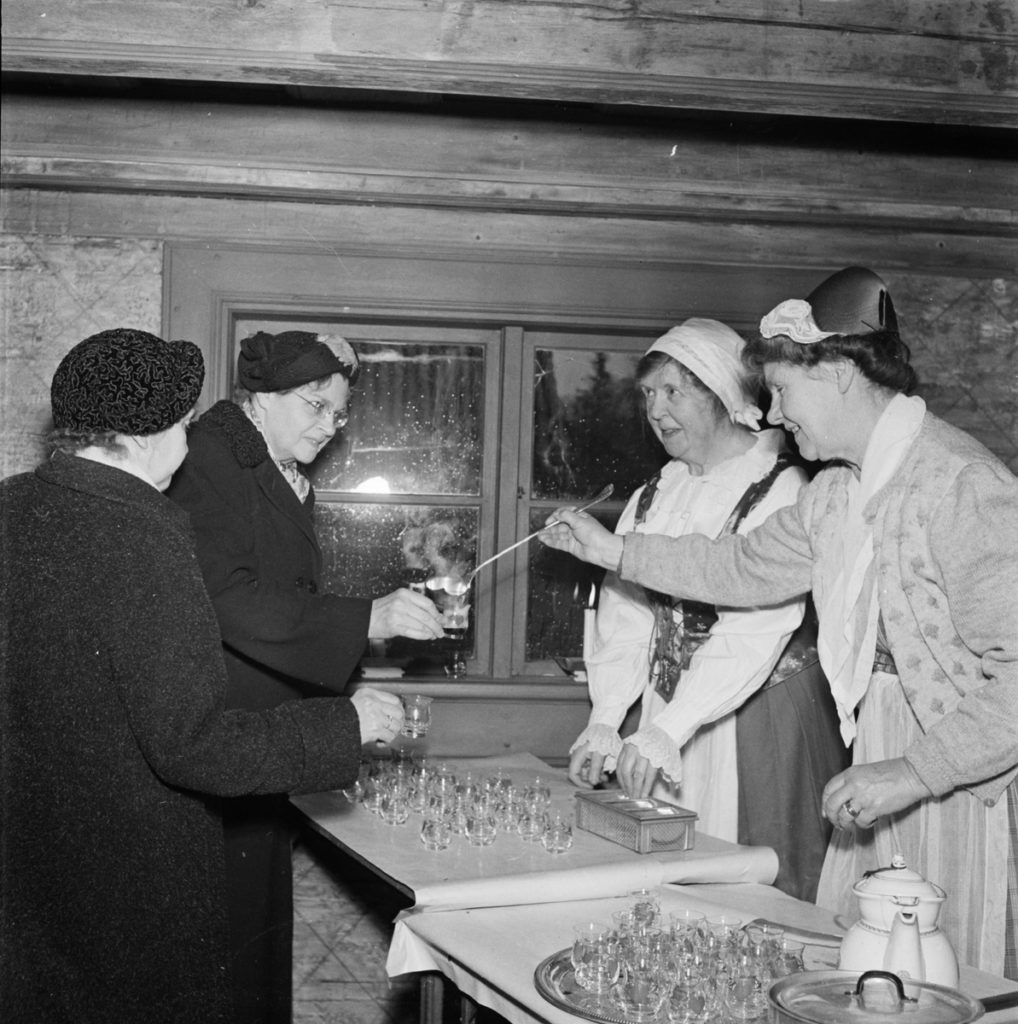
What does glögg contain?
In the older newspaper, two versions of glögg turn up, both with their own fan clubs. One side claims that everyone brags about knowing the secret of great glögg, “but one thing did they have in common—the glögg was strong like hell”. Instead, the writer prefers glögg from the wine dealer, made of wine.
The other side warns “most firmly against any addition of cognac or Spanish wine” and has strong opinions: “schnapps, schnapps, and nothing but schnapps [brännvin]—those are the three golden rules for any glögg master with self-respect”.
In Anna-Maria Zetterstrand’s cookbook from 1863, there are three interesting recipes. Firstly, a recipe for mulled wine consisting of wine, sugar, cinnamon, cardamom, and maybe some port. Secondly, brylå or bruleau, consisting of cognac, cinnamon, cardamom, and raisins. Thirdly, “Glödgat Bränvin eller så kallad Glögg“. This beverage is made of schnapps spiced with cardamom, bitter orange peel, cloves, raisins, and fennel seeds. Both the brulot and the schnapps drink are made the same way, with a sugar cone that melts into the heated alcohol that is put on fire when serving.
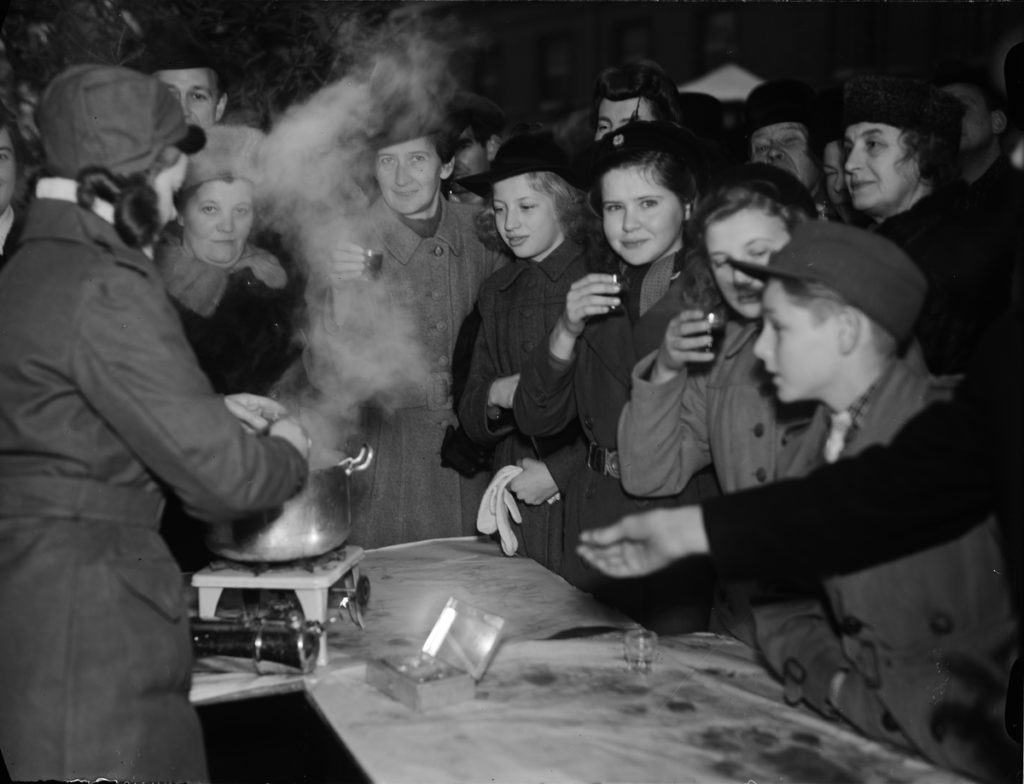
In 1884, Mathilda Langlet adds cardamom, cinnamon, bitter orange peel, and ginger to a sugar syrup and lets it boil. She then combines it with port mixed with fried apples. Langlet also has a recipe for “brylå (glögg)”, made from spiced cognac.
Charles Emil Hagdahl’s recipe for mulled wine, or vin chaud (he was fond of kitchen French) consists of red wine, sugar, cinnamon, and lemon. A bit of kirschwasser could be added to improve the taste. Instead, his recipe for brulot is closer to today’s wine-based glögg, although instead of wine he uses cognac that he flavors with cardamom, cinnamon, raisins, almonds, figs, and sugar.
In Svenska Dagbladet in 1886, Aug. Classon & Co. has an add that offers glögg for 1,50 SEK per liter, consisting of “champagne-cognac, port, sugar, and all the spices such a drink should contain”. The combination of cognac and port in glögg appears several times.
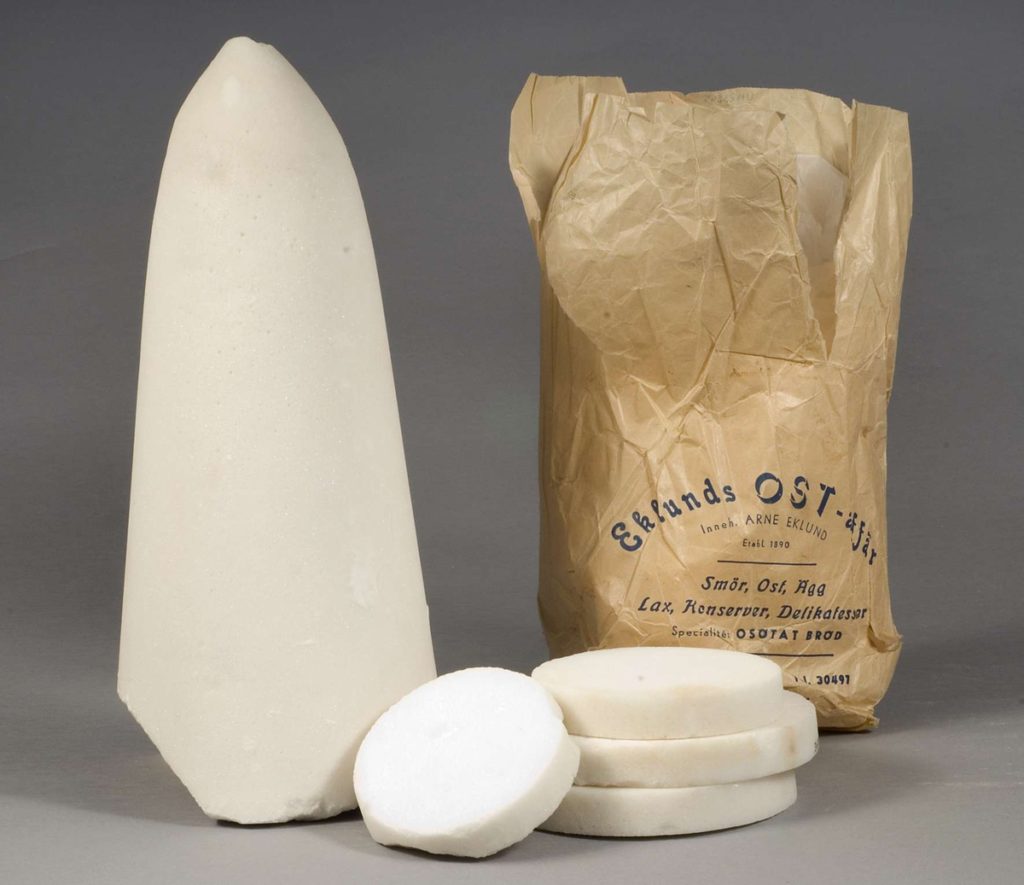
An article from 1914 in Svenska Dagbladet states that “wine glögg may have its aficionados, but it is contradictio in adjecto, as glögg = glödgat brännvin” [mulled schnapps].
Wine-based glögg has become synonymous with the word glögg in modern times and seems to be the most common if we look at old sources. Maybe the schnapps-based glögg was a 19th-century trend? To summarize, it seems that the name glögg has been used for several beverages that are:
- based on alcohol—wine, schnapps, or cognac
- spiced with at least cinnamon and cardamom
- sweetened with sugar or honey
- gently heated
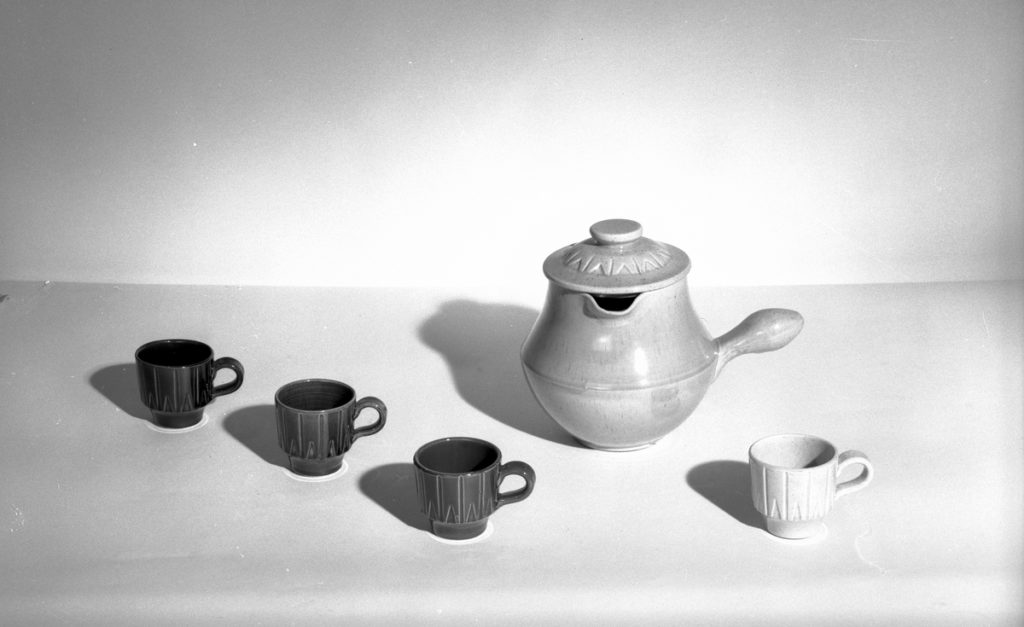
Spicing the glögg
In 1918, Elise Adelsköld suggests that you spice a wine-based glögg with “4 cardamoms, some cinnamon and cloves”, and figs, nuts, raisins, and almonds if you can get it. Her book consists of Christmas recipes for hard times, which shows—most recipes use far more spices.
Svenska Dagbladet’s Jochum advises against being too generous with cloves —”it is just the flavor, that you as much as possible should avoid in glögg”. The schnapps glögg enthusiast recommends sultana raisins, blanched almonds, small figs, cinnamon, cardamom, and “a hefty pinch” of cloves. Others also recommend bitter orange peel, bitter almonds (removed before serving), and fennel seeds.
If we look at some of the more strange ingredients, then the Christmas celebrators in Sko in Uppland must be taking the lead by miles. They apparently served schnapps glögg mixed with syrup and wormwood, but “sometimes snuff was added, to make it potent”.
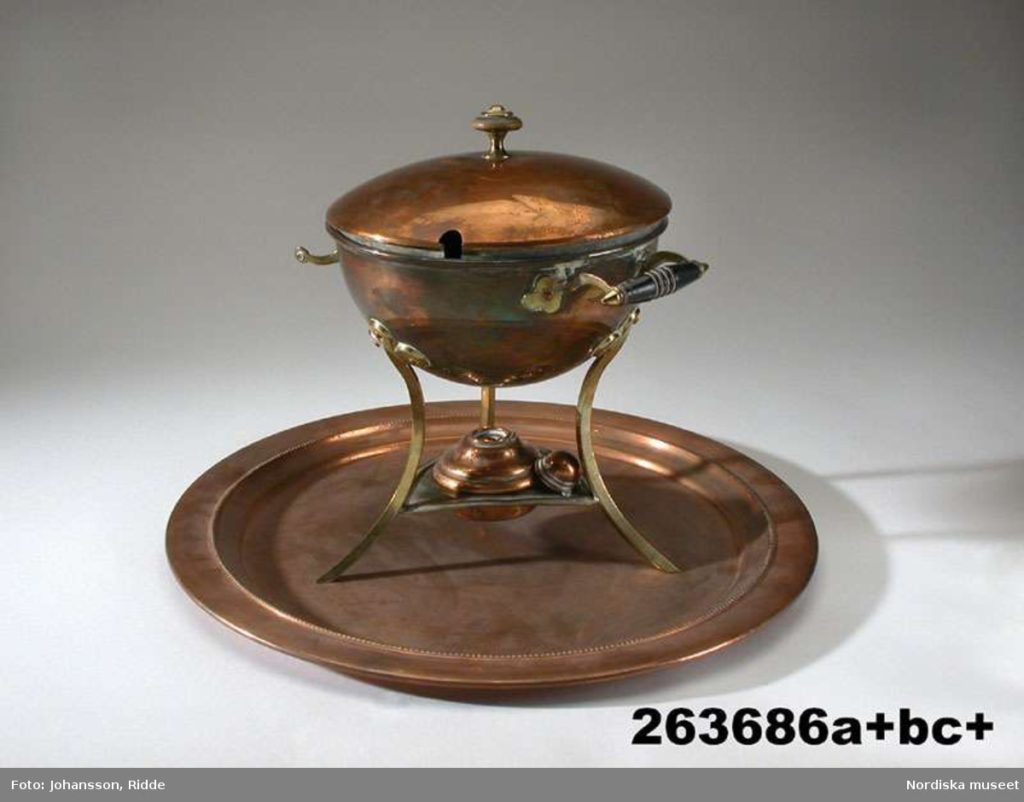
How to serve glögg
Nils Keyland mentions that in Kvistbro in Närke, glögg should be served at once when people returned from mass at church on Christmas day, preferably even before they got out of the sled. The Christmas custom of letting the animals taste everything meant that the creatures in for example Näshult in Södermanland not only got some Christmas food but also schnapps and glögg. Hopefully not in large quantities…
When it comes to schnapps-based glögg, it seems to have been a highlight of the evening when the lights were dimmed, the glögg put on fire, and the flames made the sugar melt. However, the spectacular way of serving could get consequences. In 1901, the firemen had to halt their winter ball and hurry “in their finest uniforms, with collars and white scarves” to put out a fire at a restaurant. The kitchen staff celebrated Twelfth night with glögg when some of the flaming liquid spilled and put the place on fire. Thankfully, the fire was already put out when the firemen arrived, so they could return to the ball and their waiting ladies. So, if you’re putting glögg on fire, I hope you’ll be careful. The firemen have enough to do as it is.
To serve glögg with nibbles seems to be of old; after dipping bread in the Christmas ham’s brine in 1888, then the writer was attracted by “the hot glögg with its almond, its cardamom, and its raisins”.
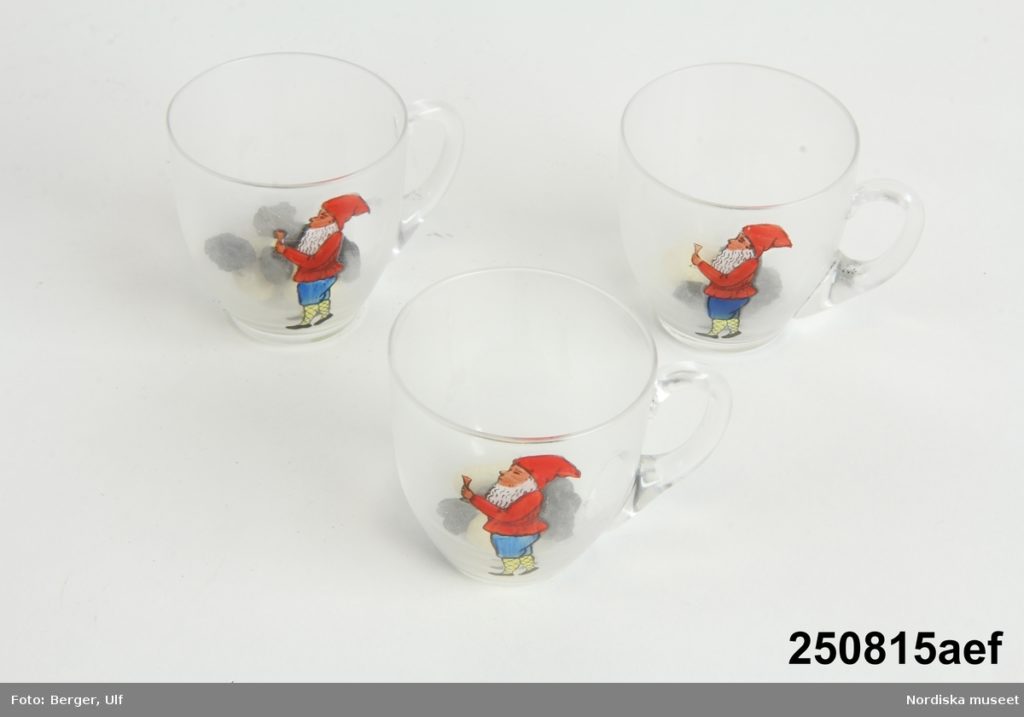
How to make mighty fine Swedish glögg
So we have two types of glögg, and therefore you get two recipes. When it comes to glögg, the real way of preparation is a mix of “use what you’ve got” and considering what flavors you like. Feel free to experiment!
How to make brännvinsglögg—schnapps glögg
Based on the upset articles in Svenska Dagbladet, we can conclude that some people considered schnapps was the only correct foundation for glögg. If you’re making schnapps glögg, I’ve picked some recommendations based on Svenska Dagbladet’s articles in the 20s and 30s:
1 liter (4 cups) schnapps [brännvin]—vodka or similar
2 cinnamon sticks
1 small piece of fresh ginger, or whole dried pieces
10 green cardamom pods
15 whole cloves
a few pieces of bitter orange peel
a large piece of a sugar cone, or about 2 dl (0,8 cups) lumps of sugar
Serving: raisins, blanched almonds
- Place all the ingredients in a large pot with a lid for half an hour to steep, then gently heat it (but don’t let it boil, it should just be warm enough to put on fire).
- Prepare for the glögg: you’ll need a fire-proof bowl and a grid. If possible, choose a grid that is “striped” instead of “chequered”. Apparently, the crossing wires make the sugar stick and burn, making the beverage “black and undrinkable”. But, if you don’t have a glögg grid (who does nowadays?), test a metal sieve.
- Pour the schnapps into the bowl. Place a piece of sugar cone on the grid. Pour just a little of the schnapps over the sugar. Put the alcohol on fire.
- Avoid pouring the alcohol over the sugar unless it is necessary to keep the flames going.
- Your Swedish mulled wine is ready when the schnapps flavor has disappeared and “left space for the wonderful aroma, that a well-balanced spice blend lends to this golden, pagan beverage”.
- Serve with raisins, blanched almonds, and maybe some gingerbread cookies.
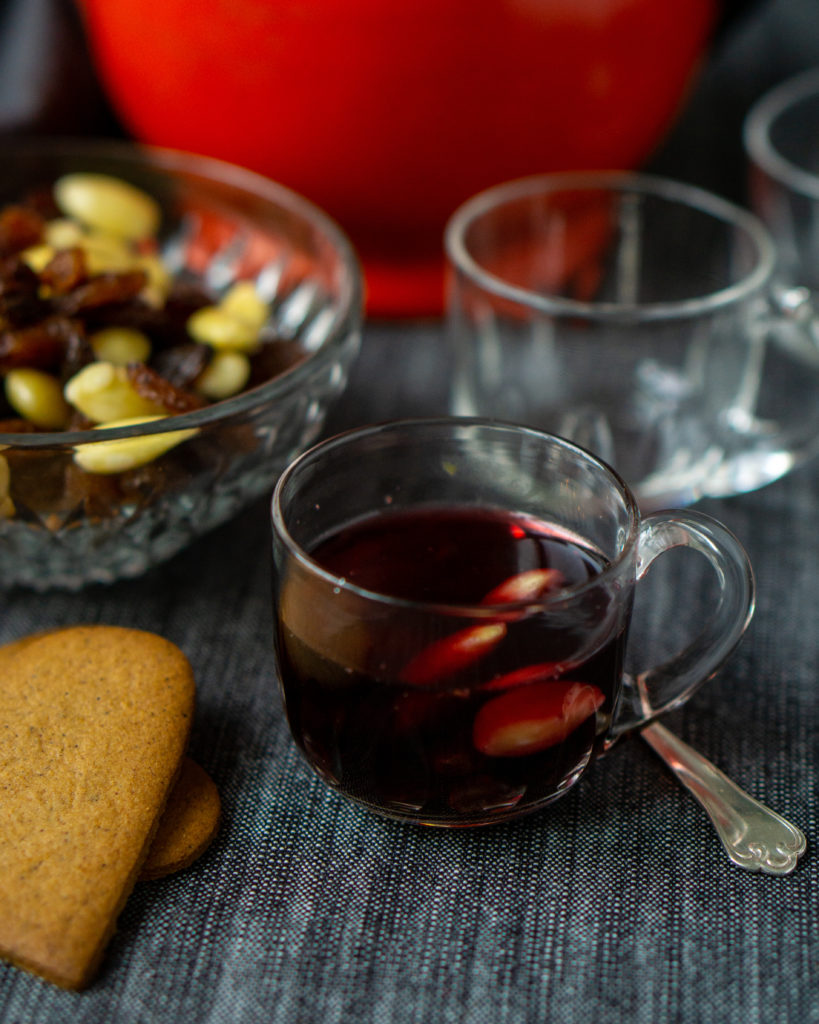
How to make Swedish mulled wine—vinglögg
Neither wine, port or cognac should be of a particularly fancy sort. You can substitute port and cognac with some vodka, Madeira wine, or rum instead. This recipe is based on an old family recipe, but I have made a few tweaks and been inspired by Magnus Nilsson’s way of letting the beverage steep for a longer time to bring out the flavors of the spices.
1 orange, preferably organic
1 lemon, preferably organic
2 cinnamon sticks
1 small piece of fresh ginger, or whole dried pieces
10 green cardamom pods
15 whole cloves
a few pieces of bitter orange peel
10 whole black pepper seeds
1,5 dl (0,6 cups) sugar
1 bottle red wine
1 dl (0,4 cups) Madeira wine
1 dl (0,4 cups) cognac
Serving: extra sugar, raisins, blanched almonds
- Sterilize a large glass jar—about 1,5 liters (6 cups) is a good size.
- Wash and cut up the orange and the lemon, keeping the peels on. Put them together with the rest of the spices and flavorings as well as the sugar in the glass jar.
- Pour over the wine, port, and cognac.
- Put on a lid and let the mixture steep for a week or longer. Shake the jar every now and then, so the sugar dissolves.
- When you’re serving your glögg, run it through a sieve and heat the liquid gently. Don’t let it boil! Make a taste test to see if you need to add more sugar. You can add a little bit more wine if the mixture is too strongly spiced.
- Serve with raisins, blanched almonds, and maybe some gingerbread cookies.
Suggestions
Regardless of which glögg you’re making—wine, schnapps, or something else—feel free to experiment and spice it according to your own preferences!

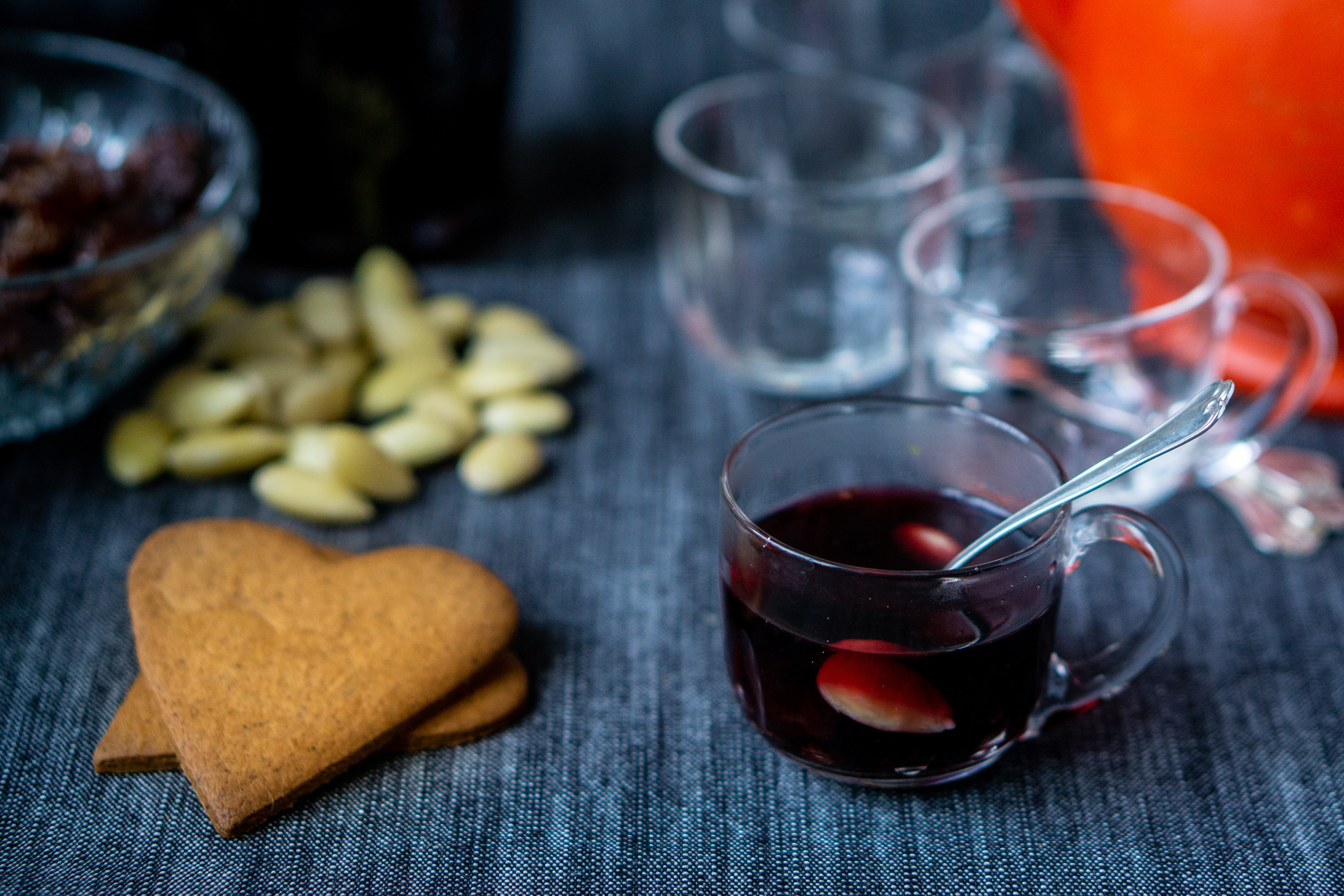

0 Comments